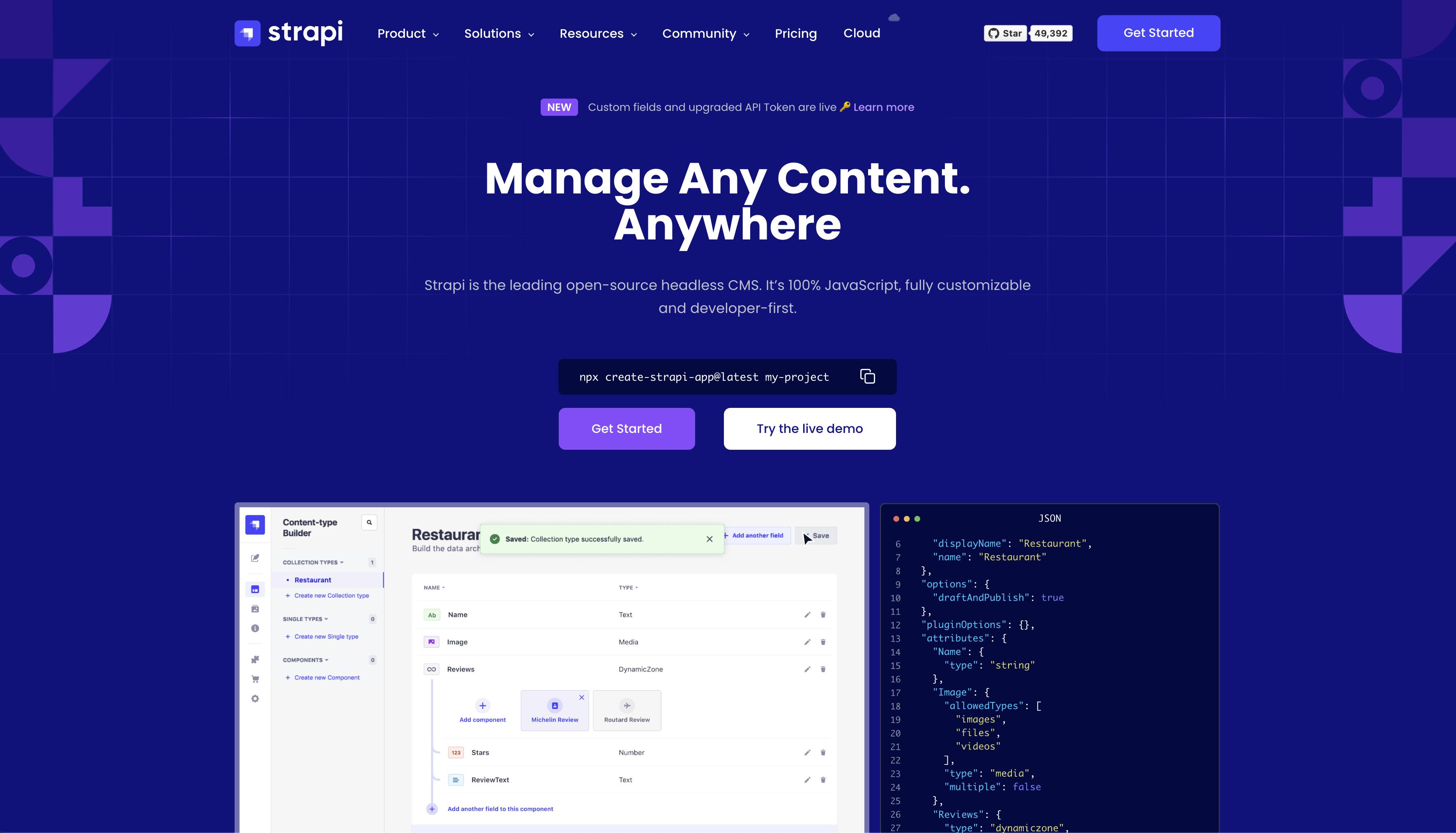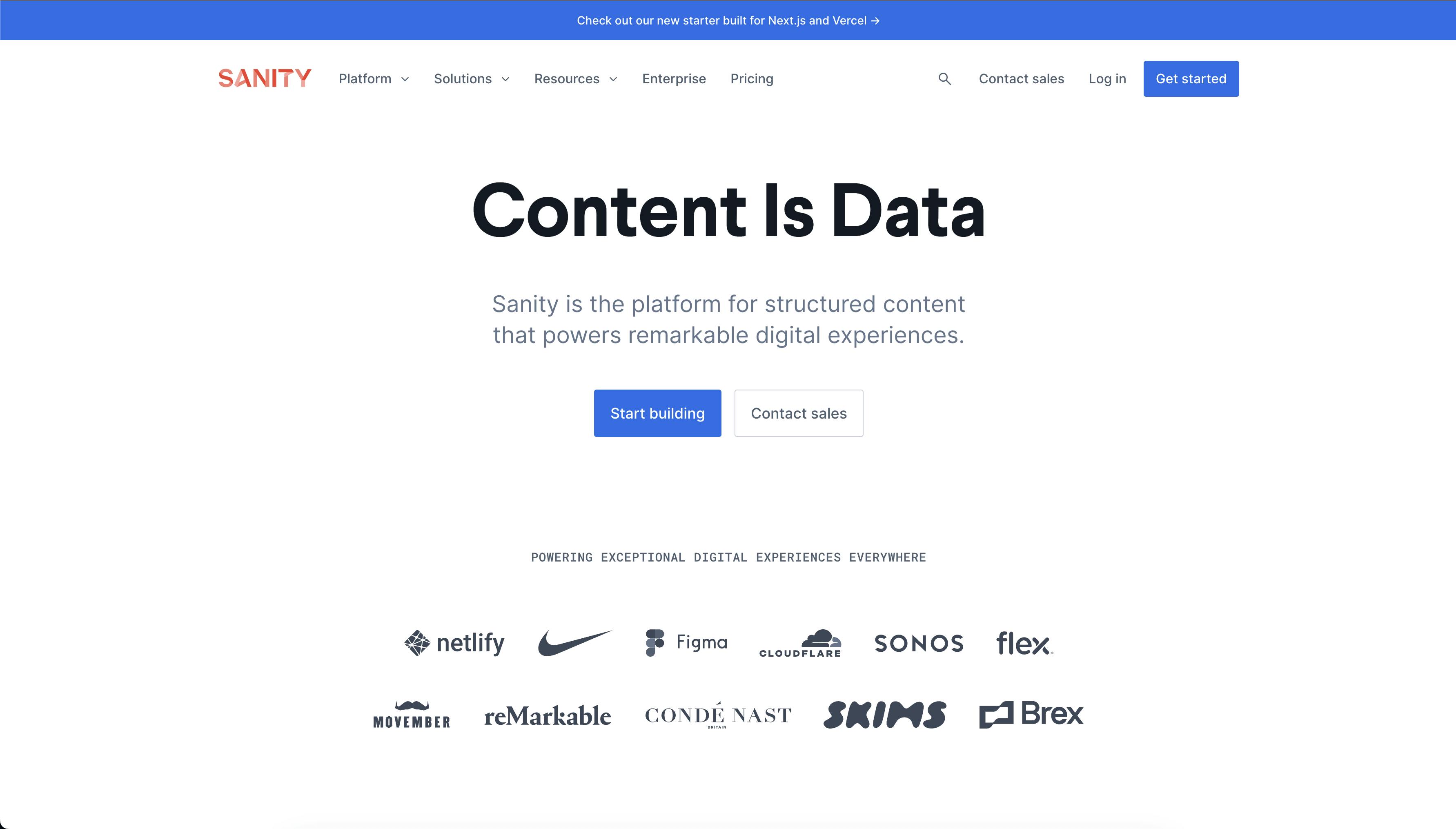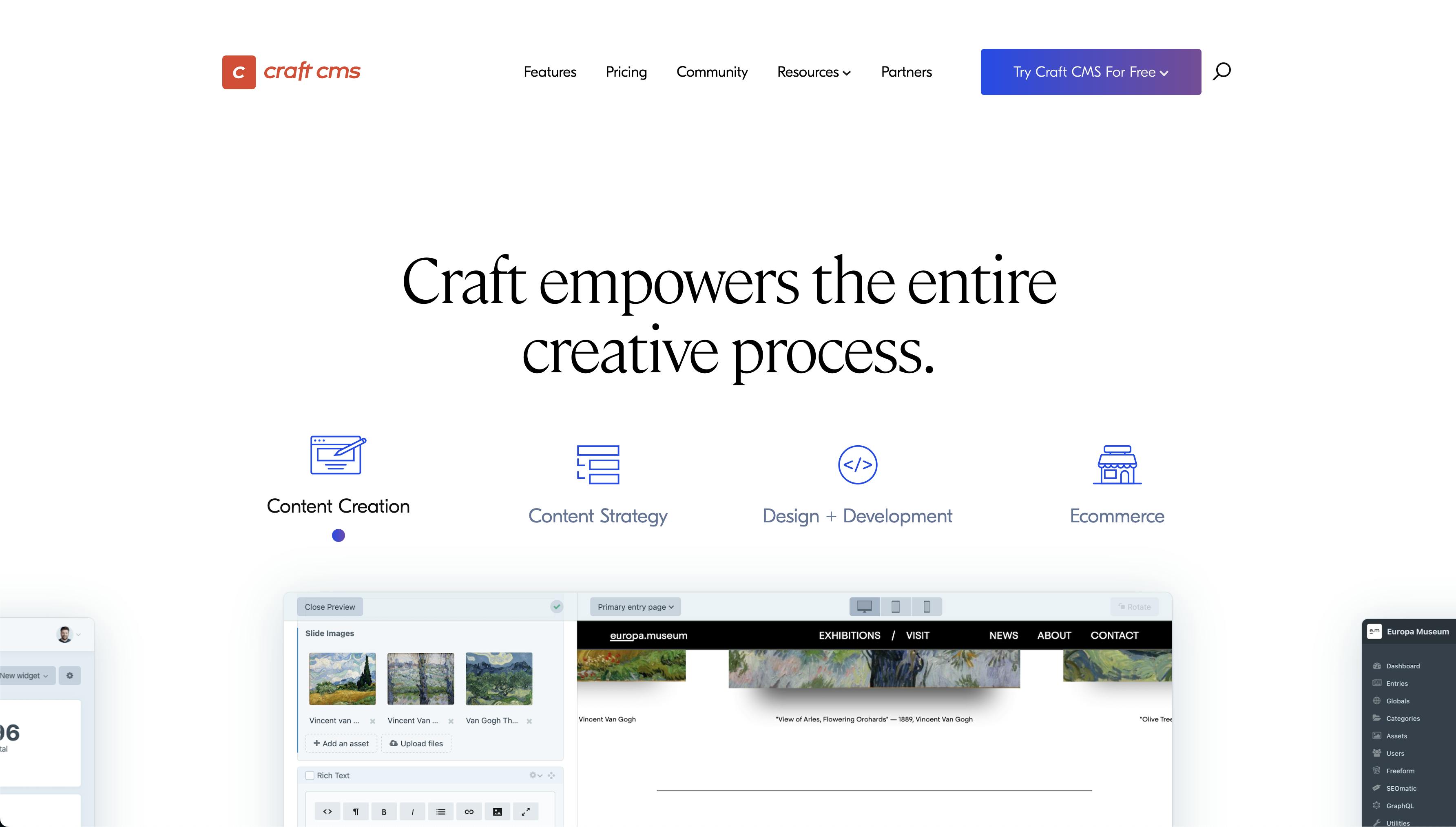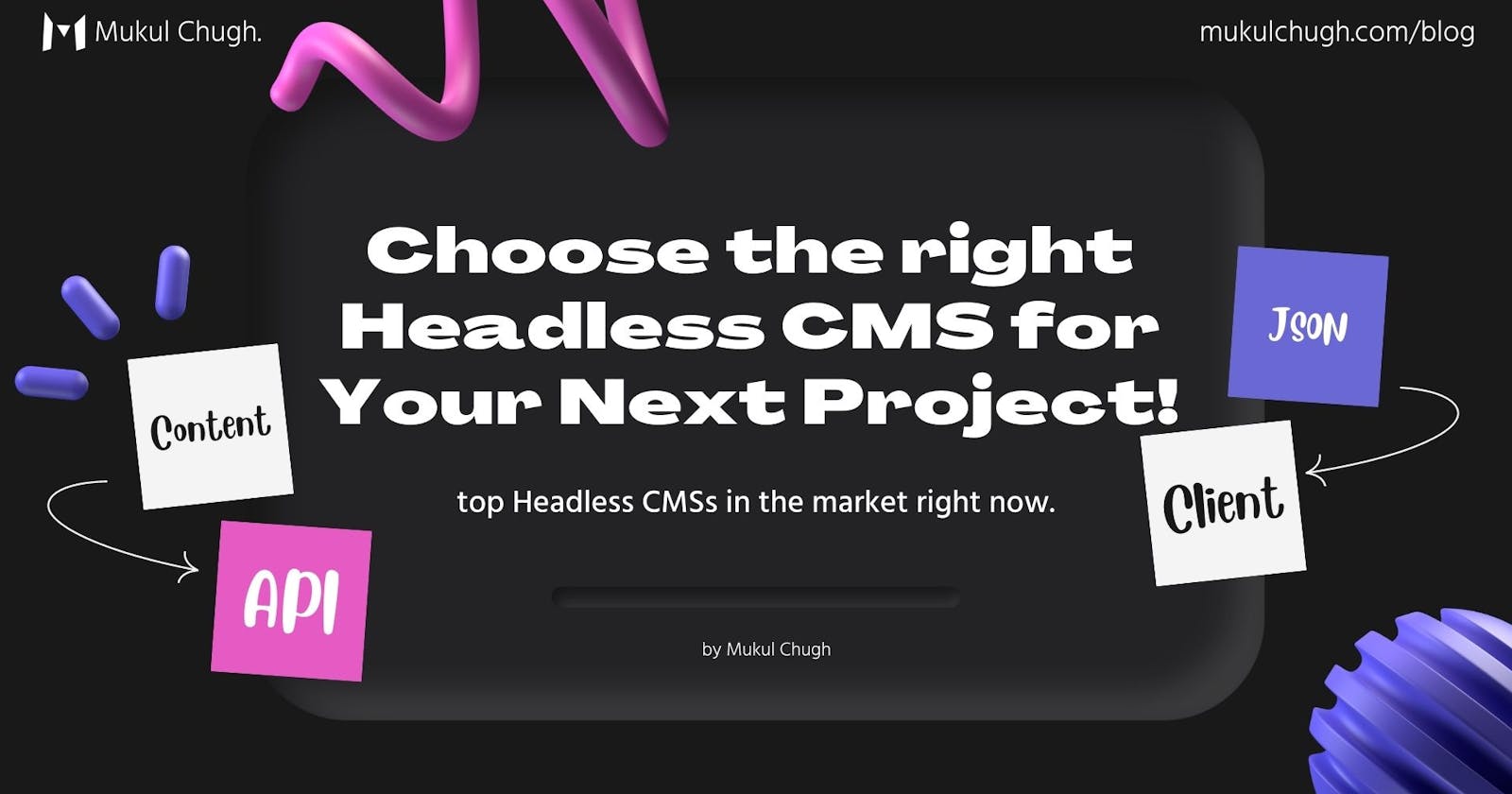Choosing the best Headless CMS for your next Project
best headless cms available in the market - 2022, comprehensive analysis.
Are you planning on developing a new project, a static site, or a web app? You'd definitely require a headless cms for better content management for your projects.
Recently I and my team members were planning on redesigning the landing page for our product. So we settled for building a Static Site using GatsbyJS, which then pointed towards the question, of how to serve content for the pages on the site.
What is a Headless CMS?
A headless CMS, also known as headless software or headless system, is any type of back-end content management system where the content repository, the “body,” is separated or decoupled from the presentation layer, the “head.” What this really means is that a headless CMS allows you to manage content in one place and still be able to deploy that content across any frontend you choose. This is key to omnichannel strategies because it lets you integrate content into any system, software, or website just by calling the APIs the headless CMS exposes.
Source - Contentful/Headless CMS explained in 1 minute
Why headless CMS?
Let us look at some of the benefits of headless CMS:
Flexibility: transitional CMS is very limiting and can be frustrating. Using a headless CMS will allow you to design your front end. Moreover, it comes with a well-defined API, thus, allocating more time to creating content rather than managing it.
Compatible: You will able to publish the content to any smart device while the backend can be controlled from one device.
Secured: As the Content publishing environment isn’t accessible from the database, using this will prevent malware attacks.
Scalable: since the front end and back end are separated, there is no separate time needed for maintenance. This allows you to customize your website anytime without having to compromise the performance.
Control: It does not have any rules and gives the developer complete control. The developer will be able to integrate with any codebase and use any preferred language of their choice.
We definitely did not want to have a messy JSON file to serve data to our website, also we have to understand the needs of the marketing team, so that they can change, update and maintain the information on the website with ease and good UX with less friction and wouldn't require to reach out to the dev team for minor changes.
So, I was assigned to look out for the best solution to satisfy both our needs, with an added requirement that the solution should be on-prem & open-source.
Let's start with a basic question.
Why go for an on-prem solution?
To get started, let us understand what is an on-premise solution and then later discuss why we preferred an on-prem solution that is open-source.
So when a software product is hosted in-house on our resources/hardware/cloud then it is referred to as an on-premise installation. This sort of setup gives us more security and access to data with better availability. This solution technically guarantees data security and privacy which was really important to us.
- More availability.
- Data Security & Privacy.
- Can be tailored to our needs.
- Can be more economical if configured well.
- Mostly open source, therefore comes with good community support.
So, there we have it, the answer to start our search for the best CMS (Content Management System)
Since we chose to go for a CMS, this is pretty much obvious that almost any Headless CMS out there comes with a satisfiable UI so our requirement for a UI is anyways sorted.
So, here's how we finalized the one we wanted to use among a plethora of options out there on the internet.
When you start searching for headless cms, first make sure you have all your basic requirements and expectation noted down to help you make the right comparison and take a decision
First Elimination Research, so far I just knew that we need the best possible option out there, therefore to achieve that I finalized a list of options via my research about this on google considering multiple parameters and opinions with a little bit of experience I finalized these platforms to start with.
- Hygraph
- Wordpress VIP
- Contentful
- Strapi
- Ghost CMS
- Agility
- dotCMS
- DatoCMS
- Directus
- Butter CMS
- Cosmic
- CraftCMS
- ContentStack
- Kontent.ai
- Sanity
- StoryBlok
- Netlify CMS
Now, it was time to dive deeper and rank among the top five platforms that stand out for us, and that is what I did. I went to explore all these platforms by doing a comparison of the features, pros & cons taking into consideration our basic requirements and some good to-haves that can benefit us in the future as we get more mature in using these platforms.
After going through all of these platforms, and a good couple of hours spent comparing and eliminating the less desirable ones, we came to certain conclusions.
The platforms should have good third-party integrations or support for various frontend frameworks, in our case we specifically wanted something with the best support for Gatsby.
The community should be active and the project should be large enough to be trustable in the future.
The platform should have a good user interface with minimal friction even for a non-developer.
It should not use outdated or legacy technology.
Make sure to figure out the deployment aspect of these platforms with your infra/DevOps team to make a better decision.
Make sure to prefer the platform with better developer docs.
Finally, these are the platforms that I finalized which satisfied all our requirements.
Strapi

Pros :
- Simple to use
- Easy to scale
- In-built authentication
Cons:
- Need frequent updates
- Not exactly a free solution
- Migration is a hassle.
-- Try Now!
Directus

Pros :
- really easy to setup
- Easy to use for non-technical users
- Dynamic API reference
- good UI
Cons:
- Documentation is a bit lacking
- Can only use relational databases
-- Try Now!
Sanity.io

Pros :
- Highly customizable
- Good number of ready-to-use plugins and extensions
- Adaptable and versatile
Cons:
- comparably higher skill floor than other CMSs
- No out-of-the-box support for user permission management through a GUI
- Development is more time-consuming in comparison with other services
-- Try Now!
Ghost CMS

Pros :
- SEO Optimized
- Good documentation
- Hundreds of Integrations available
Cons:
- Self-hosting requires technical knowledge
- Very costly hosting
- Perfect for blogging ONLY!
-- Try Now!
Craft CMS

Pros :
- CraftCMS regularly releases bug fixes and patches
- build our own plug-ins which means that the online possibilities are endless
- Payment integrations are simple
Cons:
- It's Not exactly headless cms, it is a hybrid one.
-- Try Now!
What did we choose?
So, we went with Strapi, which I found the best choice as per my requirements. Yours can be different, choose accordingly.
Now, let's move toward conclusions.
Conclusions
So, after exploring and testing all these platforms we settled for Strapi, which we found to be the most suitable due to it being a mature product with a good open-source community for support and all the features it offers. Other platforms are just a little different than strapi but all of them are pretty comparable and can be part of your next project. Make sure to note down all your requirements and then start your search for the best cms for your needs. Choose Wisely. Until next time! 👋🏻
Thank you, please share to show love & support! ❤️

